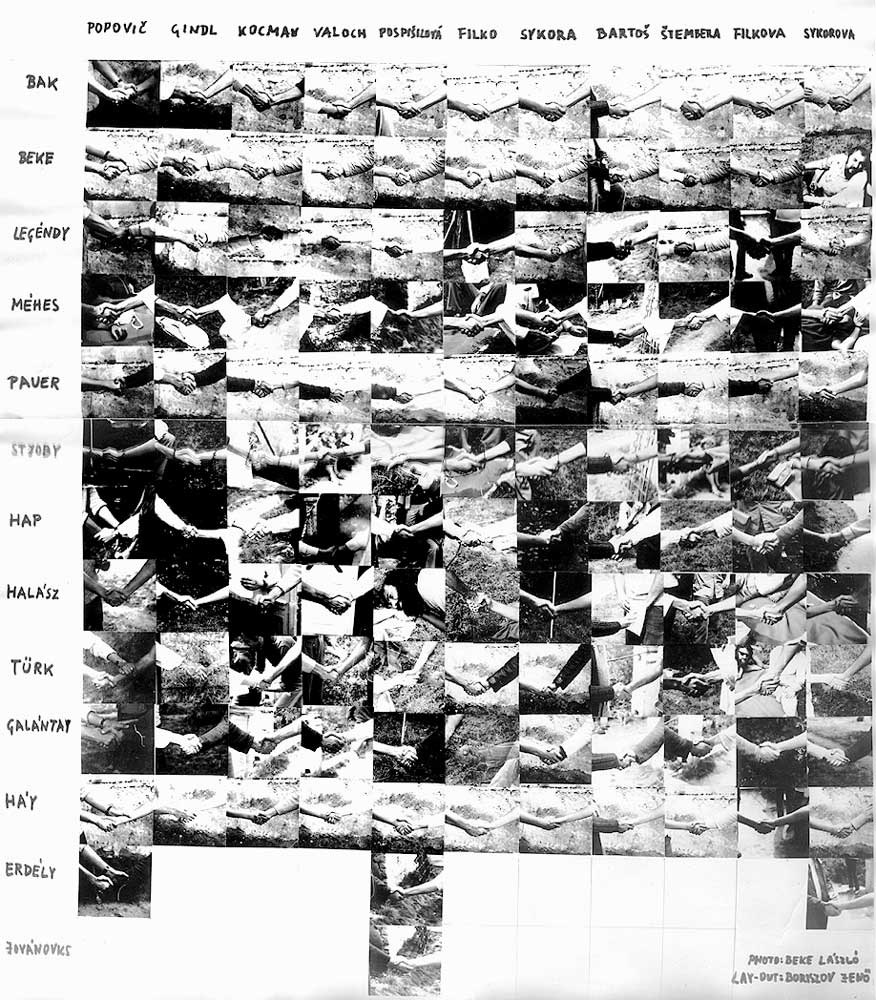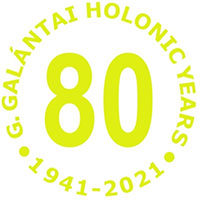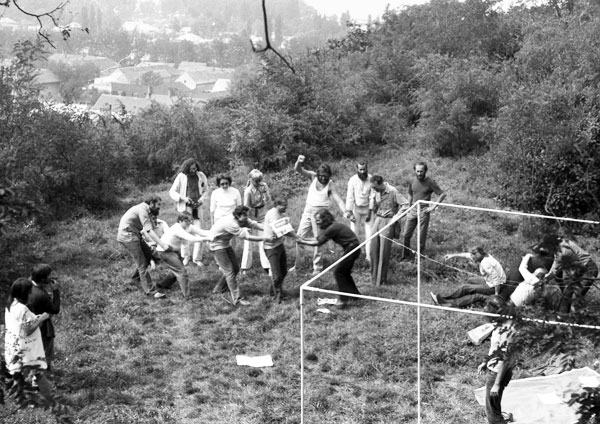Zuzana Bartošová (SK)
GREETING TO GYÖRGY GALÁNTAI´S 80TH BIRTHDAY
I first heard of György Galántai in connection with a secret meeting of Hungarian visual artists with their Czech, Moravian and Slovak colleagues. This unique event took place on 26 and 27 August 1972 in his studio in Balatonboglár and played a crucial role in establishing an unofficial Slovak art scene, which I later joined. I covered the activities of the unofficial Slovak art scene in my essays, studies and texts.
The artists who met at György Galántai´s studio in the late summer of 1972 belonged to the same generation. They spent their childhood in the dark 1950s and grew up in the 1960s. In a free and open atmosphere, they felt that their friendships, work, and activities have a place in the world that was opening to them. In the 1960s, they lived their lives to the fullest. The meeting took place on the fourth anniversary of the invasion of Czechoslovakia by the Warsaw Pact army. Hungarian artists wanted to demonstrate that political conflicts can´t dent friendly relationships and creative cooperation.

"Shaking hands” action. Meeting of Czech, Slovak and Hungarian artists, 26-27 August 1972, Balatonboglár, Hungary, Chapel Studio of György Galántai. Concept and photo: László Beke.
It was only much later that I learned about a remarkable Artpool project. During my first visit, I finally met György Galántai and Júlia Klaniczay, open-minded, friendly non-conformists. True personalities. People passionate about their work, which they see as their mission. I still admire their work, which is the Artpool archive. I admire their patience, dedication to the idea of collecting documents on free art production in times of unfreedom, the evidence of cross-border cooperation that could have been prevented neither by communist ideology nor by the secret police. It is hard to say what I value most in Artpool, whether its activities or György´s and Júlia´s civic courage.
To be honest, the archive established by György and Júlia left me literally stunned. The high walls of a traditional six-room apartment on Ferencz Liszt tér in Budapest were covered with shelves filled with boxes full of documents. According to the labels, the archive documented the artists´ independent activities during the times of unfreedom. In the middle of the room, there were tables for students. The archive was available to all, without any restrictions.
The Artpool archive documents the ability of independent artists to communicate across continents without being restricted by ideological or political barriers of real socialism in the 1970s and 1980s. The geographical boundaries meant nothing to them. Mutual friendships gave them the courage to transcend them with natural ease. The subject to which the Artpool archive is devoted is unique. Without the archive and its memory, without reminding us of individual stories of courage, this subject might have fallen into oblivion.
My admiration for Artpool activities deepened when I had a chance to study in its archive. I found documents on the activities of Slovak artists and correspondence giving evidence of their international contacts. I was preparing the book on Slovak unofficial art scene in the 1970s and 1980s based on relevant documents and sources, trying to summarise the activities and protagonists of this scene in Slovakia. The materials I found in the Artpool archive helped me to orientate myself in the events, which I either had experienced first-hand or only heard about. They reassured me that my interpretation of historical events corresponds to facts.
Another crucial dimension of Arpool is its permanent and open communication with related artists. The central domain of Artpool activities was mail-art, the art movement based on the principle of sending ideas, concepts and outlines of performances across continents through the post, which did not provoke the socialist ideologists. Regardless of the trends, Artpool still maintains the network of artists and friends through exhibitions, projects and meetings. Thank you.
Dear György, I do not know what to add. Perhaps just that I really appreciate your mission in today´s cultural world that, also thanks to you, will not cease to exist. Despite the uncertain times we live in, one still longs for a solid background of understanding, friendship and openness, and, let´s face it, of certain exceptionality of one´s fate. For instance, through the appreciation of one´s activities and creativity. There are only a few personalities who can give this feeling to other people who deserve it. I believe that you, György, are one of them. I know it is your anniversary, but I also have to congratulate Júlia on finding you, standing at your side and supporting you for many decades.
I wish you good health, a lot of love, understanding and well-being.
Kind regards,
Zuzana Bartošová
(31 March 2021)

"Tug of War” action. Meeting of Czech, Slovak and Hungarian artists, 27 August 1972, Balatonboglár, Hungary, Chapel Studio of György Galántai. Concept: László Beke, photo: György Galántai
● 27 Aug 1972 ● Galántai 70 ● Slovak Acad. of Sci., CV ● pametnaroda.cz ●



